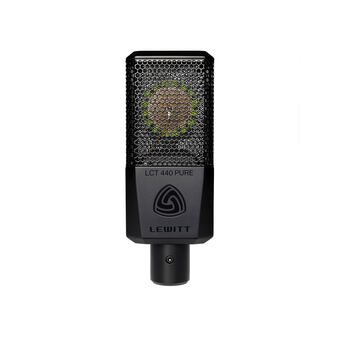
Microphone basics
How does a microphone work?
Here, you’ll find out how a microphone works.
We’ll talk about the two main types of microphones for recording, dynamic and condenser microphones.
And you’ll also find out why they’re not good “listeners”.
The different types of microphones
Microphones come in many different shapes and forms. We use them for various applications, but always with the same goal: to capture sound.
In this blog, you 1) get an overview of the different types of microphones, 2) learn why you would use them and how they work, and 3) get sound samples to hear the difference between them.
What is a polar pattern?
You may have heard about cardioid, supercardioid, and whatnot. These are called polar patterns.
A polar pattern defines how much of the signal will be picked up by the microphone from different directions.
By selecting the right pattern, you can avoid unwanted sound sources to bleed into your signal.
Dynamic or condenser - what is better?
The most relevant difference between condenser and dynamic microphones is sensitivity which leads to different (common) use cases for the two types of microphones.
Condenser microphones have a higher sensitivity and output and capture more details on vocals and instruments.
Dynamic microphones need more gain, are sturdy, and easy to use for loud sources and live performance.
Perfect to start out
Do I need a shock mount and a pop filter?
The first reason you need a microphone shock mount is a very simple one. It allows you to mount your microphone onto a mic stand or a boom arm. It also reduces structure-borne noise coming from the floor or desk.
A pop filter not only helps to avoid plosives on your recording but also protects the condenser capsule from being exposed to moisture.
What is phantom power and why does my microphone need it?
You may have heard about "phantom power" in the context of microphones and audio interfaces.
Phantom power is essential for condenser microphones to work.
This article will provide an in-depth look at the topic while keeping all explanations easy to understand.
What is XLR?
When someone asks, why should you use XLR, two things immediately come to mind.
First, they are capable of carrying the 48 Volt phantom power that's needed to power condenser microphones.
The second thing is that they are so-called balanced cables which cancel out interference that is being picked up along the way
What is low-cut filter and pad?
A low-cut filter (aka high pass filter) reduces lower frequencies in your audio signal by a set amount and can be found on microphones, preamps, equalizers, or in respective plugins.
Also called pre-attenuation, a PAD can help you to record louder audio sources before clipping happens.
Not sure what microphone to get? Our product finder will support you in choosing the perfect microphone for your needs.
Blog and reviews
Learn and get inspired.










